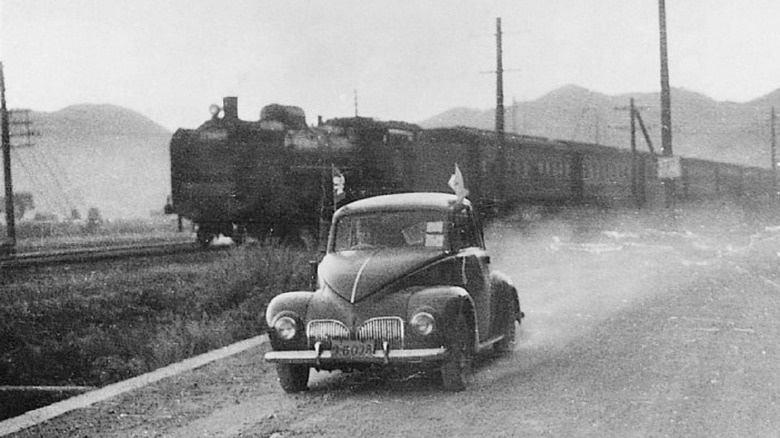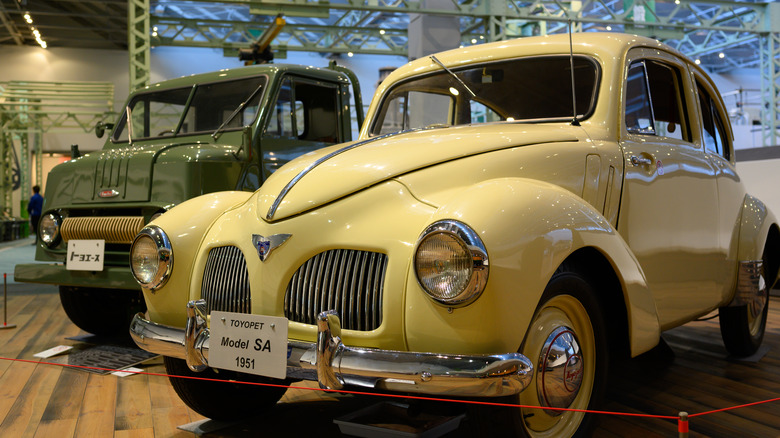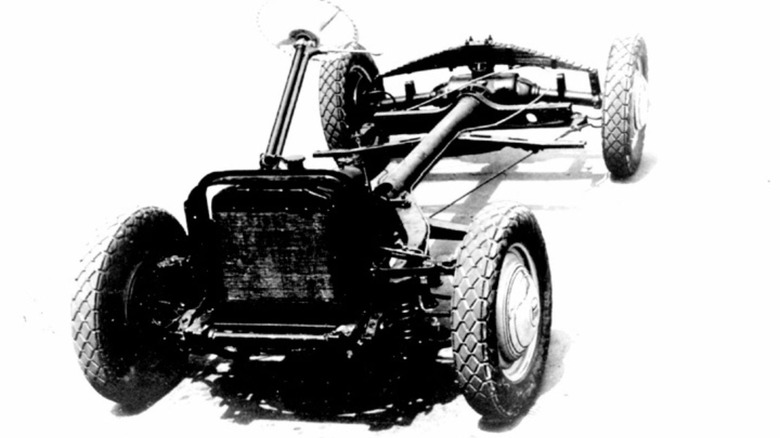The History Of Toyota's SA: It's First Post-War Vehicle
As tensions between Japan and China grew during the 1930s, the Imperial government redirected the focus of its consumer-facing industries to support the Imperial Army and Navy. Throughout the Second Sino-Japanese War and the Pacific Theater of World War II, cars and military-grade trucks were mass-produced primarily for military use. In the wake of Japan's defeat, the Allied Powers at General Headquarters (GHQ) prohibited manufacturing passenger vehicles, and though the ban wasn't lifted until 1949, Japan wasted no time before cooking something up behind the scenes.
Knowing that the Allied-imposed ban would eventually be lifted, Toyota CEO Kiichiro Toyoda pushed for the development of what would become Japan's first post-war vehicle. The Model SA wasn't a mere redesign of Toyota's first passenger car, the bulky and regal Model AA. Instead, the company opted for something sportier, landing on a look similar to that of the aerodynamic design of the Volkswagen Beetle.
Though the SA was secretly the first off the assembly line after the war, its release was actually preceded by a different, more conventional entry in the S Engine line.
Developing and Moving Away From the Model SB Truck
Though Japan couldn't produce passenger vehicles, the Memorandum on Manufacturing Industry Operations issued by the GHQ still allowed for the production of trucks. Using components from the Model AC passenger car, including the braking system and rear axle, Toyota completed the design of a small truck that would run on the 27 hp Model S engine.
Weighing 2,645 pounds, the Model SB went into production in April 1947, with the truck bed and driver's cab being mounted at Toyota Shatai. Japan was anxious to move on to something else, though. Having developed virtually nothing but trucks for the better part of the 1940s, the company was ready to revisit passenger cars.
Four months before the Model SB was even put into production, unknown to the public, Toyota finished the prototype of its first post-war passenger vehicle: the Model SA. Unfortunately, due to the U.S.-imposed ban on passenger vehicle production, it had to sit on the announcement for months.
Introducing Japan's First Post-War Vehicle
While the SB truck was in production, and the Model SA sat on the sidelines, Toyota wanted to find a flashier name for its exciting return to the passenger vehicle market. For some help, in August 1947, the company turned to the public, which came up with a long list of options. Wanting to reflect the compact size of the new line, it landed on "Toyopet," a name that was first adopted by the SB to become the Toyopet Truck.
Shortly after a name was chosen, in October 1947, the new passenger car, the Toyopet SA, was unveiled. Weighing less than the Toyopet Truck, the car nonetheless sported the same Model S engine. Unlike previous models, like the AA or AC, the propeller shaft was fed through a singular pipe and was linked to the differential carrier. Additionally, not only were the front and back wheels mounted on independent suspensions, but the front used coil springs while the rear used a single horizontal plate.
The bulk of Japan's passenger cars were being used for public transportation, and being quite different from a taxi, there was a limited need for the SA. Ultimately, its production was minimized. For the full run of the Toyopet SA's production, which ended in May 1952, only 215 units were produced.


